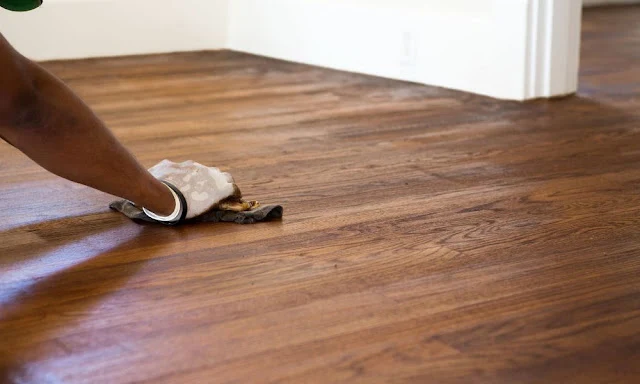Practicing a sustainable lifestyle requires time, patience, and a bit of creativity. I’ve made many mistakes along the way, but I always remember that I must remain conscious of my actions every day. I want to make eco-friendly choices in all my decisions, including home improvements.
Flooring is a matter that often causes disarray. When my home desperately needed an upgrade, I didn’t know what to do.
Very few flooring materials are possible to save, but hardwood floors show potential. Find out the environmental benefits of refinishing hardwood floors to see why the world will flourish from this straightforward endeavor.
Prevents Materials From Invading Landfills
Refinishing hardwood floors is a proactive step toward preventing the accumulation of materials in landfills. Rather than replacing worn-out flooring with synthetic materials or brand-new hardwood, refinishing the natural wood floors prevents the need to toss out old materials into landfills.
Many floor coverings, such as carpet or vinyl, have a limited expectancy and end up in landfills once they're no longer useful. These non-biodegradables lead to long-term environmental harm. Choosing to refinish hardwood floors preserves the longevity of the floors while preventing unnecessary waste.
Reduces Carbon Footprint
The process of manufacturing hardwood floors is significantly less energy-intensive compared to that of synthetic flooring materials. With hardwood floors, the primary manufacturing steps include cutting the lumber into planks, sanding, and finishing. These procedures require less energy in comparison to the complex chemical processes involved in producing synthetic materials such as laminate or vinyl.
I like to think about it this way: when I chose to refinish my hardwood floors rather than buy new ones, I’m inherently reducing carbon emissions. Manufacturing companies won’t have as great of a demand for the products when I remain eco-conscious and refinish floors instead.
Eliminates the Need to Manufacture New Materials
Buying brand-new materials means that a factory must manufacture the product. The environment suffers in every step of the process, from cutting down trees to producing plastics in a factory to transporting goods. This causes the emission of greenhouse gases that may lead to poor air quality and climate change.
Deciding to refinish hardwood actively reduces the demand for resources and the energy consumption associated with production. By reusing and repurposing existing materials, it’s possible to make a significant positive impact on the environment.
Supports Sustainable Forestry Practices
Every new material must come from somewhere. Foresters cut down trees in order to manufacture natural hardwood floors.
Refinishing hardwood preserves the current wood’s life in homes. In return, the environment, wildlife, and communities will thrive.
I hope that the incredible environmental benefits of refinishing hardwood floors helped to teach about how the environment can thrive from a simple home improve.
Now, it’s time to move forward in the process. Follow the essential steps before refinishing hardwood to start the process. The floors will look brand new without causing a negative environmental effect.

Add your comment